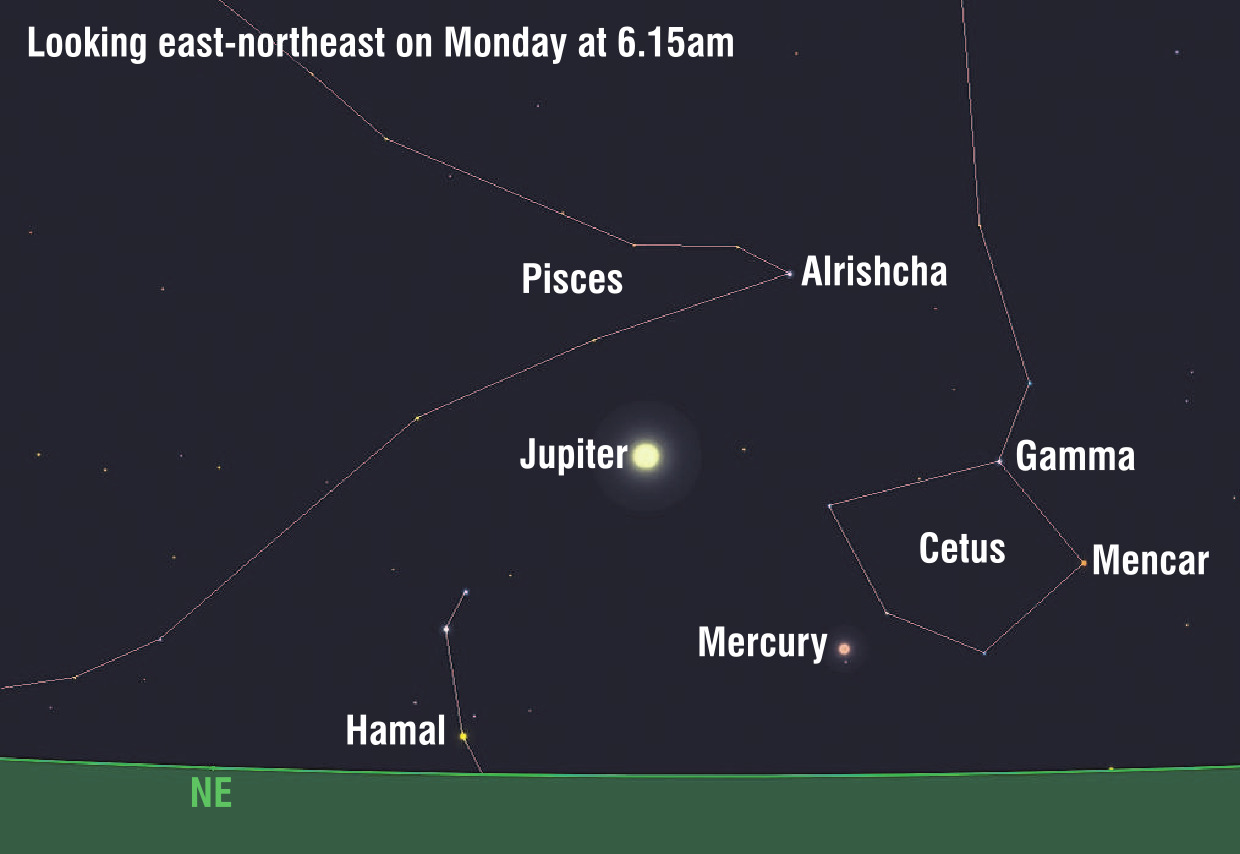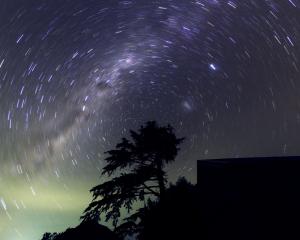

Jupiter is the reigning superstar of the morning sky, shining brighter than any other celestial object. Cast your gaze towards the northeast in the hours before dawn, and there it is, like a dazzling spotlight. Now, turn your attention a little below and to the right. See that orange ‘‘star’’? That’s Mercury making its celestial cameo. While Jupiter may be seven times further away than Mercury, it shines 12 times brighter. Jupiter has the upper hand because it’s bigger, and its clouds are masters at reflecting sunlight.
If you own a telescope, brace yourself for an even more extraordinary sight. Even modest optical aid will reveal Mercury as a tiny crescent, with just over 30% of its disk illuminated by the sun. It’s like a little, celestial smiley face.
Both Mercury and Jupiter are moving through Aries. This constellation is named for the ram that inspired the epic voyage of Jason and the Argonauts to search for the golden fleece. If the skies are clear and your vision is keen, you might even spot Hamal, Aries’ brightest star, twinkling close to the northeastern horizon.
But wait, there’s more! Mercury is close to a relatively dim but distinctive star pentagon, representing the head of Cetus, the sea monster or whale. And here’s a legendary twist: Poseidon, the god of the sea, sent Cetus to wreak havoc on the coast of Ethiopia. Why, you ask? It all started with a bold claim by Cassiopeia, wife of King Cepheus, who bragged that she was more beautiful than the sea nymphs. Note to self: never challenge mythical sea creatures to a beauty contest.











